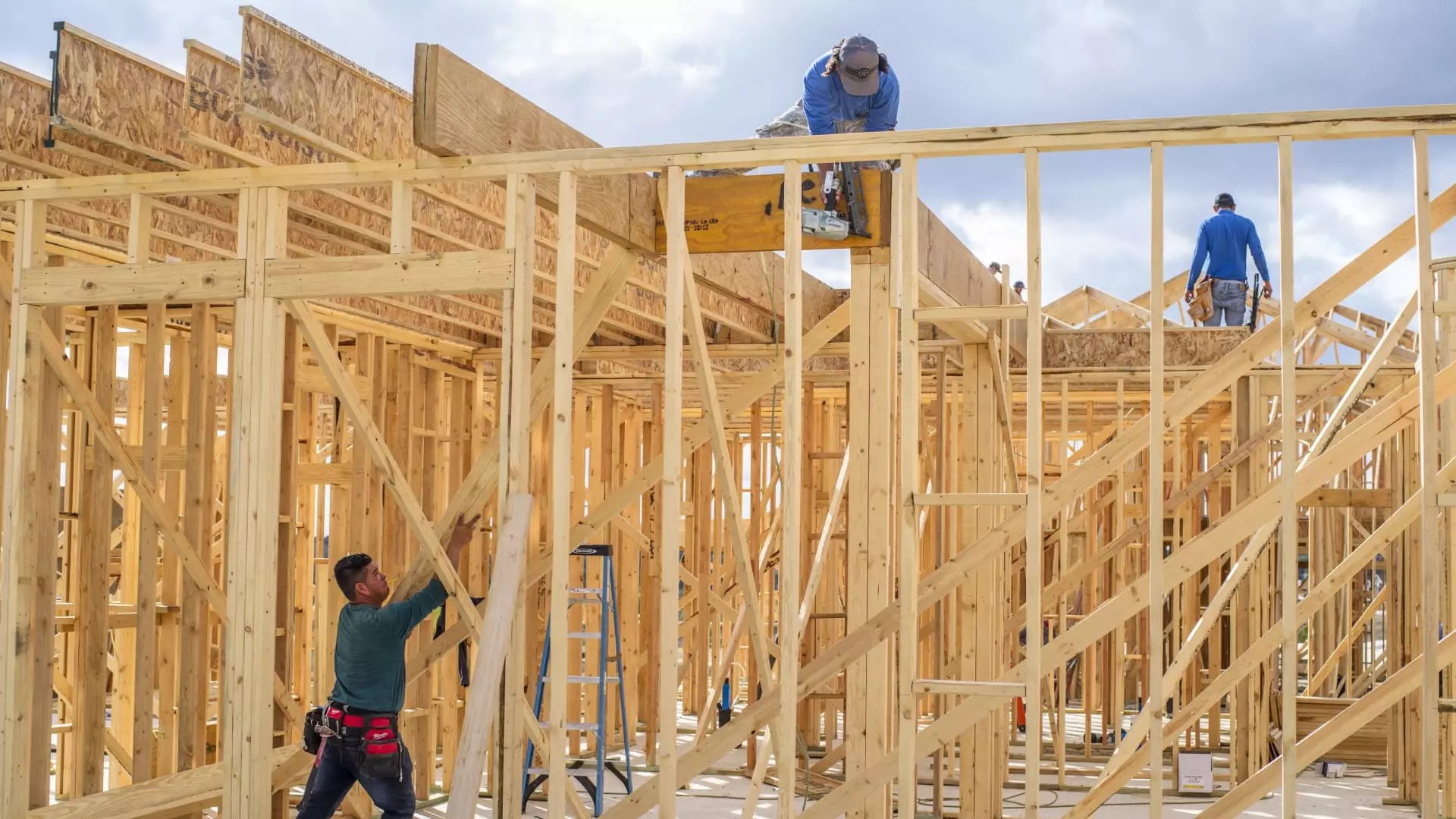The landscape of home construction in the United States has undergone significant fluctuations in the past months, as indicated by the National Association of Home Builders’ (NAHB) Housing Market Index (HMI). Recent reports reveal a stark decline in sentiment among single-family homebuilders, hitting a five-month low in February. A combination of factors, primarily the fear of looming tariffs and rising costs, has contributed to this downturn. Understanding the intricacies behind these statistics is vital for grasping the challenges currently facing the housing industry.
The HMI recorded a significant drop of 5 points from January, settling at 42. In the world of homebuilding, a reading below 50 reflects negative sentiment, illustrating the struggles and apprehensions faced by builders. This dip is particularly worrisome when compared to last year’s reading of 48, suggesting a weakening outlook as builders grapple with economic realities. As noted by NAHB Chairman Carl Harris from Wichita, Kansas, the industry is eager for favorable policies, particularly regulatory reforms, but existing uncertainties and escalating costs have forced many to recalibrate their expectations for 2025.
A closer look at the components of the HMI reveals that current sales conditions have seen a decline of 4 points, landing at 46. Similarly, buyer traffic has decreased by 3 points to 29, while the anticipated sales in the next six months have plummeted by 13 points to 46—the weakest sentiment since December 2023. These figures indicate not just a momentary dip but a potential long-term trend in both buyer sentiment and builder confidence. Compounding these challenges, builders are navigating an environment marked by high mortgage rates. With rates exceeding 7% in early 2024, affordability remains a pressing issue.
The Impact of Tariffs and Trade Policies
At the heart of the concerns expressed by builders is the anticipated impact of tariffs on construction materials. Builders heavily rely on international trade for vital components of their work, with 32% of appliances and 30% of softwood lumber sourced from overseas markets. The looming uncertainty regarding tariffs—originally set to take effect in February but delayed—has only intensified anxiety over future costs. NAHB’s chief economist, Robert Dietz, highlights a sobering reality: the fear of inflated costs is translating into a palpable nervousness within the construction community.
Despite expectations of declining mortgage rates and possible pro-development initiatives, the market’s current realities suggest a downward trajectory in single-family housing starts compared to the previous year. Amid a scarcity of existing homes for sale, builder sentiment wanes, potentially leading to diminished supply just as the key spring selling season approaches. Recent earnings reports from various homebuilders echo a common theme—the pullback in buyer interest, largely attributed to ongoing affordability challenges.
Ryan Marshall, CEO of PulteGroup, addressed these issues, noting that, while the Federal Reserve made moves to lower short-term interest rates, mortgage rates have remained stubbornly high, continuing to deter potential homebuyers. This illustrates a disconnect between policy efforts and market realities, further complicating the situation for builders and consumers alike.
As sentiment wanes, builders are navigating uncharted waters regarding pricing strategies. A noteworthy trend has emerged: the share of builders lowering prices has dipped to 26% in February from 30% in January, marking the lowest percentage recorded since May 2024. Additionally, alternative sales incentives are witnessing a decline. The effectiveness of such incentives is diminishing as high prices and elevated rates limit their appeal, particularly for buyers who are already priced out of the market. Builders are confronted with the realization that traditional sales tactics may no longer resonate with a shrinking buyer pool.
The current state of homebuilder sentiment is a reflection of broader economic anxieties—rising costs due to tariffs, high mortgage rates, and diminished buyer demand all interconnect to shape a challenging environment. As we move forward, the housing market must adapt to these realities, focusing on innovative solutions to engage buyers while navigating an uncertain economic landscape. The road ahead requires vigilance and resilience from builders, making strategic adjustments essential for any possibility of recovery in this vital sector.


Leave a Reply